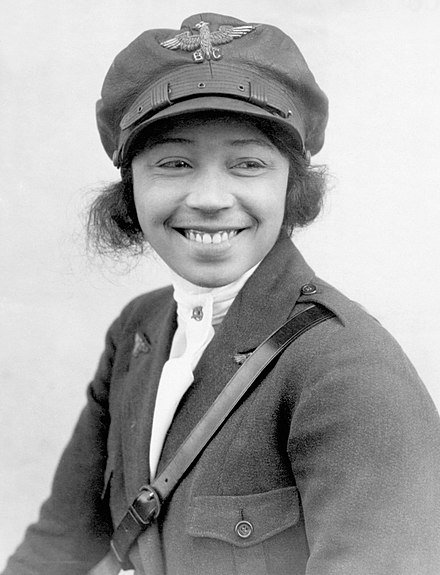By: CA Staff Writer | Feb 6, 2025
Clarksdale, Mississippi – Throughout history, many trailblazers have shattered barriers, opening doors for future generations. One such figure is Bessie Coleman, the first African American and Native American woman to earn a pilot’s license. At a time when both racial and gender discrimination were deeply entrenched in American society, Coleman defied the odds and soared into history as a fearless aviator.
Early Life and Challenges
Born on January 26, 1892, in Atlanta, Texas, Bessie Coleman was the tenth of thirteen children in a sharecropping family. Her father, who was of Cherokee and African American descent, left the family when she was young, leaving her mother to raise the children alone. Despite financial hardships, Coleman was determined to receive an education. She walked miles to attend a segregated school and later enrolled at Langston University in Oklahoma. However, due to financial difficulties, she was forced to leave after one semester.
In the early 1900s, opportunities for Black women were extremely limited. Coleman worked as a manicurist in Chicago, where she was inspired by stories of World War I pilots. She dreamed of becoming a pilot but faced immediate rejection from flight schools in the U.S. because of her race and gender. Undeterred, she sought an alternative route.
Journey to France
Encouraged by African American newspaper publisher Robert Abbott, Coleman set her sights on France, where women had greater access to flight training. She learned French, saved money, and in 1920, traveled to France to pursue her dream. The following year, she made history by earning her pilot’s license from the Fédération Aéronautique Internationale—becoming the first Black woman in the world to do so.
Breaking Barriers in Aviation
Upon returning to the U.S., Coleman became a sensation, known for her daring aerial stunts and showmanship. She performed at airshows across the country, captivating audiences with her loop-the-loops, figure eights, and high dives. More than just an entertainer, she used her platform to advocate for racial equality and inspire African Americans to pursue aviation.
Coleman refused to perform at segregated events and encouraged young Black men and women to pursue their own dreams in flight. She aspired to open a flight school for African Americans, determined to create opportunities that had been denied to her.
Tragic End, Lasting Legacy
On April 30, 1926, Coleman’s life was tragically cut short during a test flight in Jacksonville, Florida. A mechanical failure caused her plane to crash, killing her at the age of 34. Despite her untimely death, her impact on aviation and civil rights remains profound.
Bessie Coleman’s legacy paved the way for future Black aviators, including the Tuskegee Airmen and later, Black astronauts and commercial pilots. In her honor, the Bessie Coleman Aviators Club was established in 1977 to support female pilots of color. In 1995, she was commemorated with a U.S. postage stamp, ensuring her story continues to inspire generations.
Bessie Coleman was more than a pilot—she was a symbol of resilience, courage, and determination. In an era of extreme racial and gender discrimination, she dared to dream beyond the limitations set by society. Her story reminds us that barriers are meant to be broken and that perseverance can lead to groundbreaking achievements.
As we celebrate Black history, Coleman’s legacy serves as a powerful testament to the unyielding spirit of those who refuse to be grounded by prejudice.
*To report a spelling or grammar error or inaccurate information, please email us at info@clarksdaleadvocate.com.



